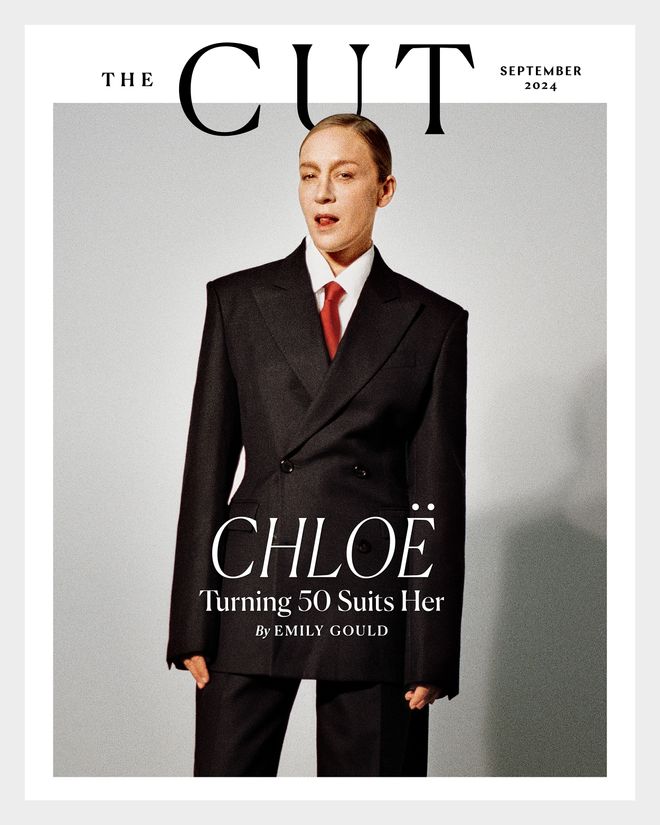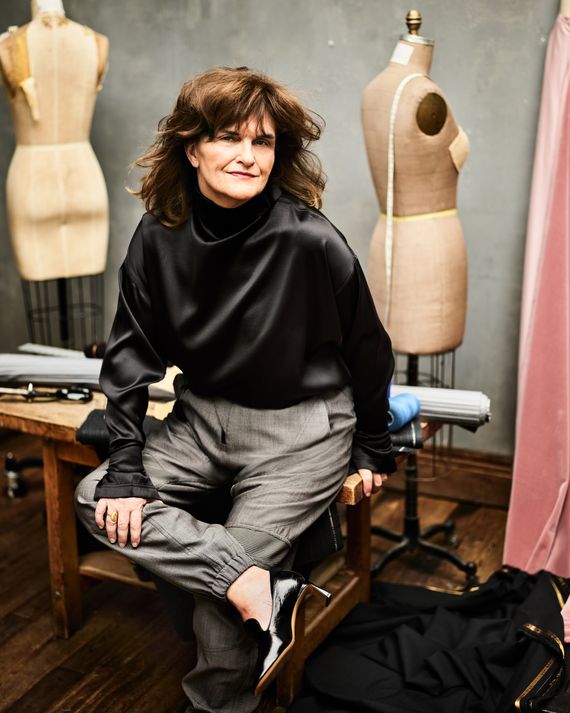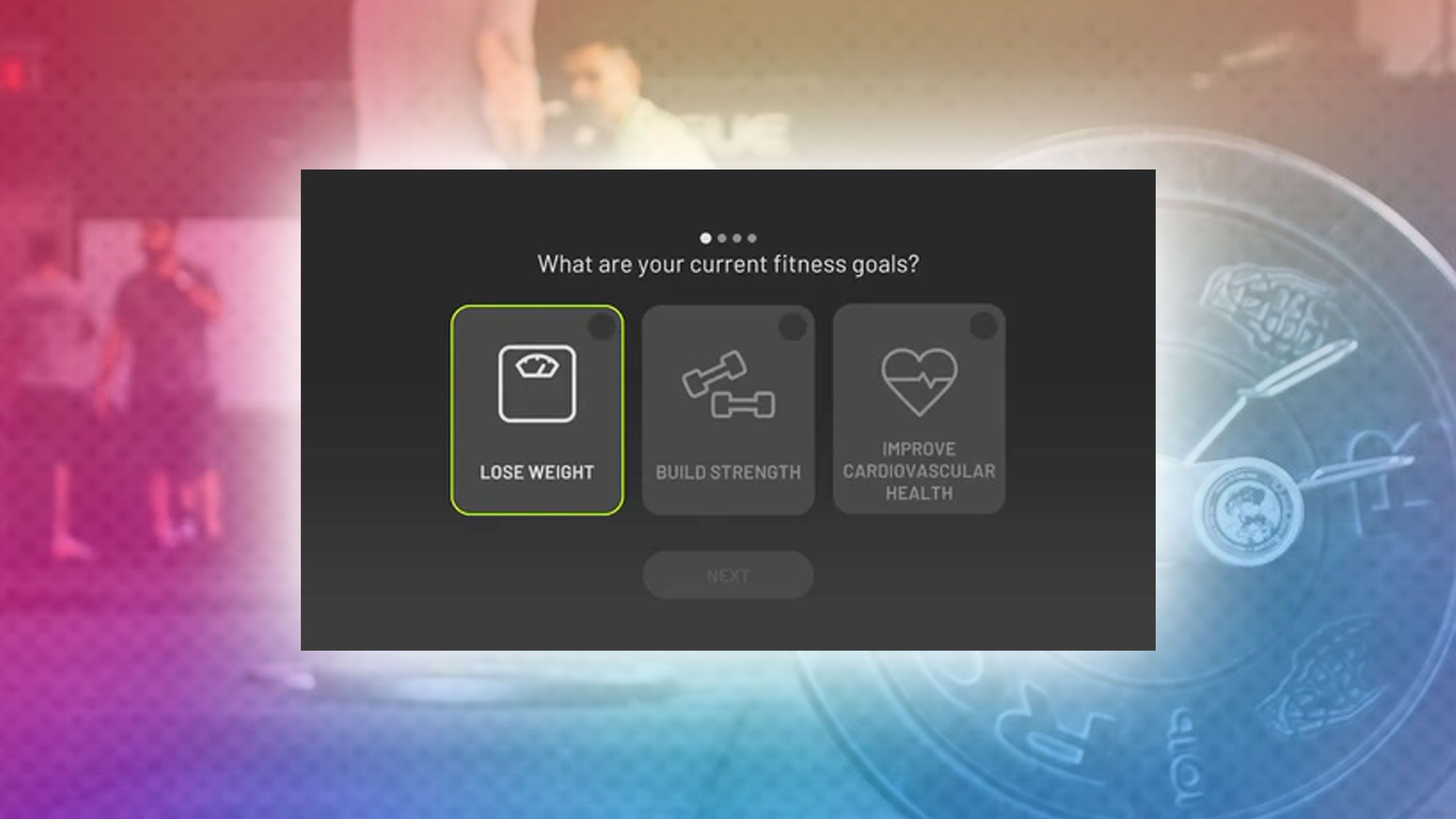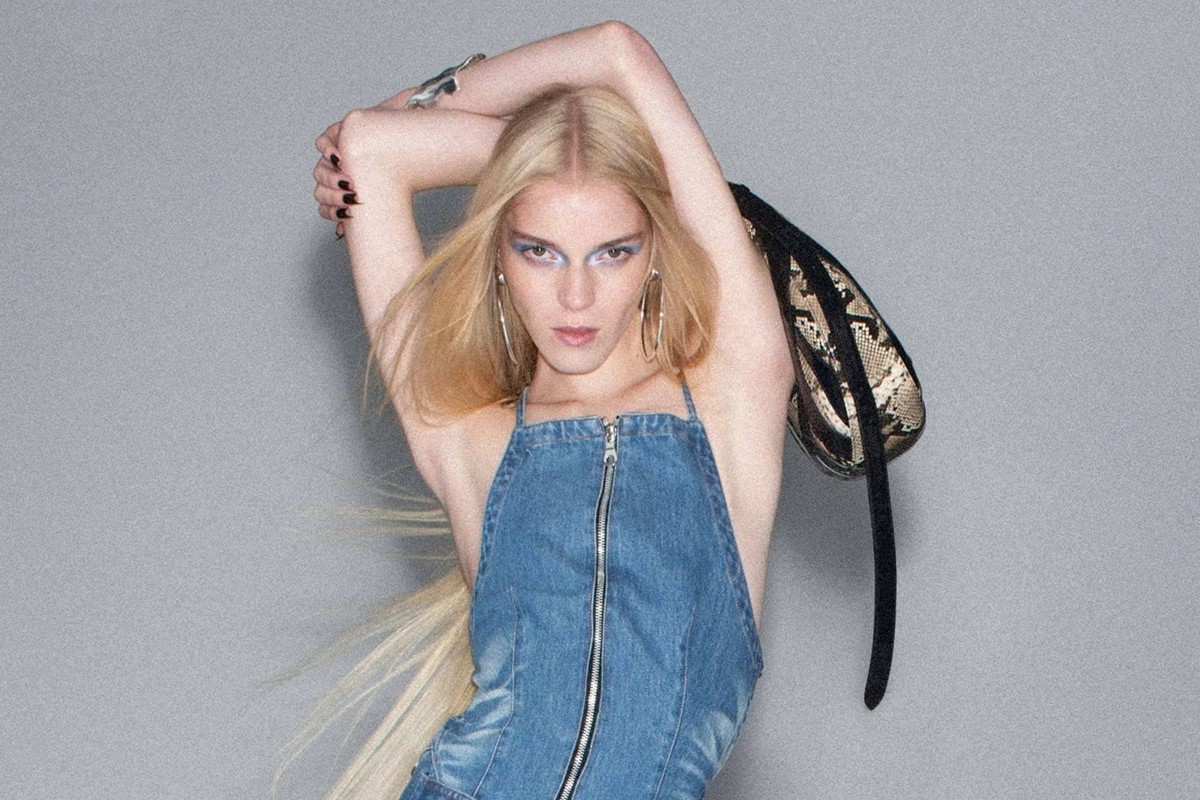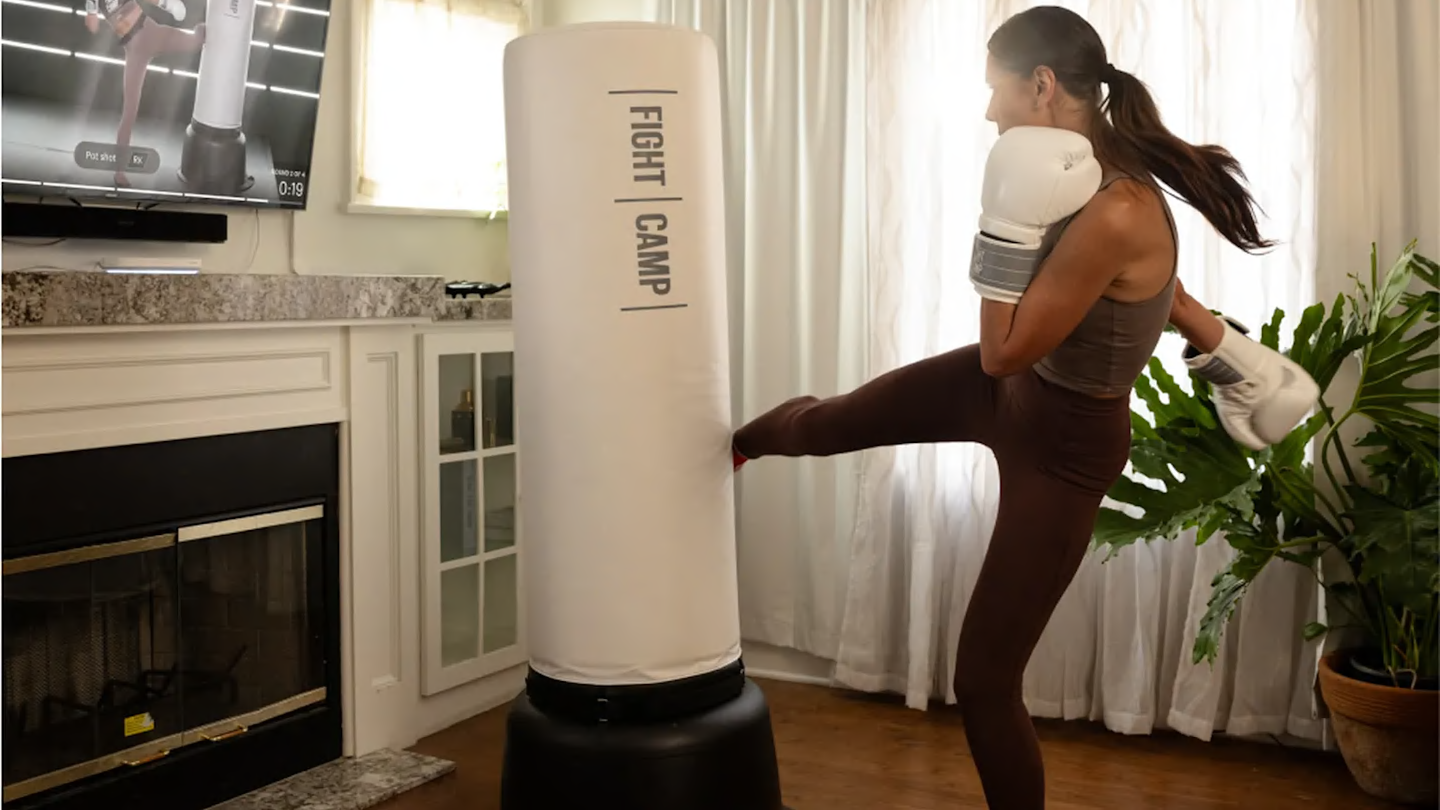Fashion
How Fashion Critic Cathy Horyn Lost (Then Found) Her Personal Style
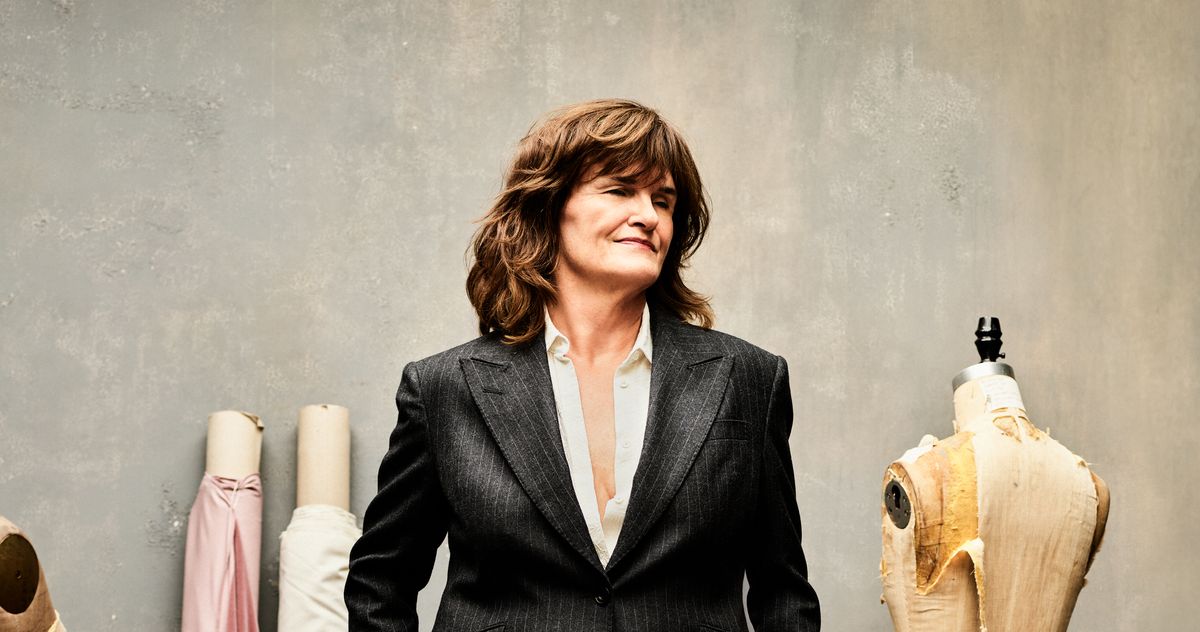
In a bespoke suit with the tailor Ralph Fitzgerald.
Photo: Mark Seliger
I remember really looking forward to the fitting. I had booked it for the end of March 2023, right after the fall shows. It had been a great season for women’s suits, from Prada’s ironic approach, which drew on nursing and military uniforms, to Saint Laurent’s sternly tailored classics, but the one I personally liked was by Proenza Schouler, the label of the Americans Jack McCollough and Lazaro Hernandez. Made in a robust black gabardine, the suit had full-cut trousers and a longish jacket with wide shoulders and a slightly curved waist. As soon as I got home from the collections, I called Proenza about ordering it. I was invited to come in to have my measurements taken. This felt like a lark, for despite my access to designers and how often over the years I’ve seen something on a runway and thought, I want that!, I’ve rarely followed up on the impulse. The last time was four years earlier for a mannish overcoat in a dull brown tweed that I bought because it reminded me of a no-nonsense woman in an English novel as she ambles off to shoot a rabbit in her vegetable patch. Unfortunately, that was exactly the effect all that brown tweed had on me: tragic.
Now, in an about-face, all I wanted was this chic black pantsuit. I could picture myself walking down the street in it, tall and languorous. It’s going to look so good, I thought, hurrying toward Proenza’s office in Soho on that March afternoon.
I had been in a rut, stylewise. I had put on 20 pounds over the past decade and wasn’t inclined to replace the clothes in my closet — in some cases because there was no replicating their special zest, like a traditional kilt in navy-blue suede that Azzedine Alaïa made for me in 2000 and that I told myself I’d still be rocking at 90. Instead, in the years after 2014, when I left my job as fashion critic of the New York Times, I stubbornly muddled along with the same few dark pants and tops. For some show seasons, I traveled to Europe with all my “outfits” for the three weeks in one carry-on wheelie bag. I was proud of this feat, like it was a packing challenge or my private retort to influencers who travel like a circus.
But my weight gain alone would not have been enough to make me lose a sense of style. I’d had other periods in my life when I was big and was still buying clothes and putting effort into how I looked. In 2016, the year I turned 60, I bought a farm in the foothills of the Blue Ridge Mountains in Virginia and, with the help of local contractors, began to rebuild it. In that exhilarating, four-year-long process — of putting in electricity and wells, cleaning up fields, driving out the copper-heads, and adding two small dwellings and a barn — I had no problem exchanging some of my enthusiasm for fashion for a new tree or a tractor with a front loader.
In late 2022, though, I felt the urge to dress up again, at least — especially — when I was away from home. The project of building the farm was largely complete, and I had started growing cut flowers to sell to local florists, a tiny seasonal operation — tulips, peonies, dahlias, sunflowers, zinnias — that I could handle myself. By the time I strolled into Proenza, I was abuzz with joy at the prospect.
Jack and Lazaro met me in their large mirrored fitting room, where I had already removed my coat and shirt and was standing like a trooper in my undershirt and an old pair of pants. We gossiped for a few minutes about the Paris shows and then Vanessa, the head fitter, came in with her tape measure and a pad. As Jack and Lazaro moved into a corner and we continued to talk, I struck a martyr’s pose.
“You can put your arms down,” said Vanessa, uncoiling her tape.
“Right,” I said. It had been a while since I’d been in a fitting.
Yet as the tape began to go round my body, my enthusiasm evaporated like a mirage. For I realized in that awful second that I had entered the fitting room without an image of myself. Or, let’s say, I didn’t like the image I saw: a frumpy woman at 66 with a bad haircut. My chic-suit fantasy was apparently free-floating, detached from my body. I became intensely self-conscious. And that wasn’t the worst part. The worst part was that I ignored good grace and vocalized my feelings to Jack and Lazaro, whom I’ve known for years. Catching Jack’s eye, I sort of whimpered and grimaced.
“Shush. Stop it,” he said. “You look fine.”
Vanessa said the suit would be ready in a few months, and I left the office with my tail tucked between my legs. God, I thought, what a putz.
Back on the farm, I didn’t have time to unpack any of this. It was tulip season, and 1,200 Dutch stems were on the march, ready to come out of the field and go to florists in Charlottesville, Madison, and Orange. A baker wanted branches of redbud, a native tree that grows at the edge of woods. She presses the pink blossoms and uses them to decorate her cakes. New dahlia tubers were arriving from wholesale growers or other farmers who sell their stock; these would go in the ground after the last frost, in May, or around the time the overwintered dahlias are beginning to shoot up and I’m preparing beds for sunflower and zinnia seeds. There’s always something to do on a farm.
But I would be out in a field or pulling up a tulip bulb, and of course my thoughts raced back to the moment in the fitting room. It really annoyed me that I’d acted like an old fool. Because that’s not how I feel at all on the farm. If anything, the physical labor and all the new stuff I’ve had to learn have kept me from feeling my age. I’m happy with my life. My sole companion is Murray, a black Labrador. I’ve never been married, a status my mother very nearly predicted when I was in college. “Your ideal husband lives in another state,” she said. I’m not sure how Nancy knew that, since every couple my parents knew in our small Ohio town was never separated by more than a twin bed, but she was uncanny that way. I did have two long relationships: the first with an Englishman named Derek who repaired historic windmills and water mills and lived near Norfolk, Virginia, and with whom I had a son; and then, in my 50s, with Art, whose success was in the garment industry and with whom I lived in Manhattan until his death.
I’ve not experienced the self-erasing sense of old age described so powerfully by writers like Virginia Woolf and Annie Ernaux and, from a different angle, by Miranda July in her new book, All Fours. July’s protagonist, who is 45, spends much of the novel worrying about oldness and is certain that “only bad stuff was coming … because generally, going forward, things would not work out, disappointment would reign.” And I found it a bit depressing when a girlfriend from school said recently, as we were going out to dinner, “It doesn’t matter what I wear, no one will be looking at me.” Even if my own clothes hardly make me noticeable, I haven’t felt that graying blur of age.
Not long ago, I was digging through old letters, photos, and diaries; I’ve kept everything, including journals I wrote between 1999 and 2003, my first years at the Times. What was most surprising to me was how much crap there was. Bridget Jones was right. I couldn’t believe how much time I wasted moaning over my empty love life or some dipshit boyfriend. One of the things nobody tells you in your 30s and 40s, when the dating sucks and you think you’ll be alone forever, is that the problem goes away in your 60s. You’re glad your time and choices are entirely your own. It may be my favorite decade of all.
But, unconsciously, I was doing some self-erasing of my own. That’s what I realized in the weeks after the fitting. My boring, compact travel wardrobe was not something to be proud of. To me, it was the white flag of surrender. I felt great, alive — so why not start putting that feeling into how I dress?
In July 2024, wearing Phoebe Philo.
Photo: Mark Seliger
Nobody would have been more pleased to hear this than my glamorous and opinionated mother. For most of our 34 years together — she died in 1990 — my appearance and weight were a subject of near-comic concern with her. As a kid, I was never fat, not even close. But Nancy was always thin, so she made me aware that I was on notice. As a young woman, she bore a resemblance to the actress Hedy Lamarr, people said; it was the heart-shaped face, the center-parted dark hair, the celluloid smile with the red lipstick that would be Nancy’s signature all her life. I, on the other hand, her only daughter, bore the imprint of my father, a high-school and college tackle: square-faced, sturdily built, and with the same protruding chin of his mother, my adored Polish grandmother, Anna, who owned a tavern in Cleveland.
If we were going to church or out to dinner, Nancy would blithely put her preteen tomboy daughter in young-lady dresses from Pappagallo. At dancing school, my main interest was to swing the smallest boy the hardest I could during the “Patty Cake Polka” segment — if only to show my mother that I was not, nor ever would be, “a lady.” Which she was, down to the tips of her David Evins pumps (mail-ordered from Saks in New York) and the gourmet but simple meals she prepared out of her French cookbooks. I knew that salad was served after the main course, never with, and that it was tacky to wear stockings in summer. “That’s what a tan is for,” she’d say. I also heard, as did anyone within ten yards of us, “Suck your tummy in!”
To the very end of her life, Nancy tried to make me see that my appearance mattered. That was the intent, I believe, behind a remark she made during a visit to my house in Washington in September 1990 — our last time together, in fact; she was terminally ill with cancer. Settling into the junk-shop sofa I had slipcovered in a green pencil stripe, Nancy said, “Cathy, all your problems would go away if you would just lose some weight.” I still had my pregnancy body, minus the belly.
As usual, I called her bluff. “What problems?” The conversation died on the one-yard line. And we reverted to discussing the slipcover.
I can see now how my mother’s focus on my looks was its own weight, which, despite my intelligence and drive, I couldn’t quite shuck off. In my stash of photos, I found one of my slender 22-year-old self in a floral-print Fiorucci sundress. And I recall another, a slinky minidress with snaps down the front, that I bought with waitressing money at the old Ann Taylor shop on Nantucket. But for some reason, this passion for feminine clothes and enjoying how my body felt in them failed to thrive after my early 20s. Maybe it was my feminism or my rebellion against my mother. Maybe I was in love with my gritty newspaper life in Norfolk and a handsome British guy with a motorbike. Whatever the explanation, by the time I became a style reporter, in 1986 for the Detroit News, I didn’t have style of any kind. As my mother hooted, not unreasonably given my jeans and tent-size Laura Ashley jumpers, “You? A fashion writer?”
In some ways, it was better to know nothing about fashion. Detroit was a tremendous learning ground. Amid the mixture of car money, the novelty of Detroit’s sound (techno at the time), the racial diversity, and the originality of retailers like Linda Dresner, fashion flourished. And without preconceived notions about what made a good fashion story, and with the support of a great editor at the News named Susan Wyland, I had the freedom to develop my own voice and opinions. I loved covering the collections in Europe, but what really fascinated me was the sociology of clothes — what they said about the people wearing them, whether they were hip-hop kids in London or famous socialites in the front row in New York.
My own look was another matter. I wasn’t clueless so much as impulsive. For a time, I joined the nunlike brigade of the avant-garde designers, like Comme des Garçons and Yohji Yamamoto, who were chopping up classic tailoring and slashing open sleeves. Later, I was desperate to wear Romeo Gigli and look like a latter-day Lord Byron in a frock coat, the skinniest trousers, and a floppy, poetic shirt. Whereas Anna Wintour’s bob has been a stable force for 50 years, recognizable even in silhouette, my hair kept shooting off in baffling directions. There was the glam perm that wound up looking like Dustin Hoffman’s wig in Tootsie and the even shorter boy cut inspired by Linda Evangelista’s famous chop. It looked gamine on Linda; on me, it looked like I was going to challenge Giorgio Armani to a cage match. On one of my first trips to London, I bought a black puffball mini (another fad) and wore it proudly with a severe black Evan-Picone jacket buttoned up to the neck and a pair of Chelsea boots. The look would have repelled any straight man — not that I cared or realized that. But it was probably the first fashion look I put together on my own, and what I loved was that Evan-Picone wasn’t a high-fashion name. It was a mainstream sportswear brand.
I remember receiving some advice from Bill Blass soon after I’d moved to New York and joined the Times in 1998. We were at his house in Connecticut because I was planning to wear one of his evening dresses to receive a journalism award. “For God’s sakes,” he growled, “don’t look like no one ever gave you an award before.” It was great advice: Don’t be so eager. I was going out to parties three or four nights a week as part of my job, and for the first time in my career, I became aware that I could look provincial — that despite how much I thought I knew about fashion, I just didn’t have the extra finesse of knowing how clothes should look on me. Bill’s other advice: Pay attention to how you dress, or people will talk. (Of course, they snipe anyway. In 2012, after I’d criticized Lady Gaga for making a travesty of an early Gianni Versace design by wearing it in a poorly done music video, she sang on a track for a Paris show, “Cathy Horyn, your style ain’t dick.” That same week, in response to a negative review, Hedi Slimane posted a screed about me on Twitter, saying, among other things, “I also often hear that her sense of style is seriously challenged.”)
But in my early 40s, I started to feel like I was getting a handle on what looked best on me. For most of the ’90s, like other fashion writers, I generally wore a sober, tailored look, but once I began trusting my intuition, I found that what I was most drawn to was a refined mixture of masculine tailoring and jaunty sportswear, like French sailor pants in dark-blue linen from Loulou de la Falaise worn with a striped silk blouse edged in black lace, or a suede kilt from Alaïa. Not only did they represent my idea of feminine, they were also distinctive — when I wore them, I was no longer part of a brigade but one person.
One day in early March 2000 as the Paris shows were winding down, I went to the Saint Laurent men’s boutique to buy a long, lightweight gray wool tunic with a hood, like a djellaba, that Hedi had designed and that I planned to layer over an old Zoran shift in the same color. It was on that trip that I also went to Alaïa’s studio to order the kilt.
André Leon Talley came with me, and he later summarized the day in a fax. He always printed his faxes in huge block type, in case, you know, you happened to be at the top of the Eiffel Tower when one arrived at your hotel across town. Their tone was similarly urgent.
THANK YOU FOR THE MOST INTRIGUING AND INSPIRING DAY, ESPECIALLY THE UNFURLING OF YOUR 2000 LOOKS, BEGINNING ALREADY WITH THIS EXTRAORDINARY KILT, FROM AZZEDINE, AND THE UNEXPECTED MOMENT FROM HIDI SLIMANE, THE MONKISH ELEGANCE OF THAT TUNIC … I THINK YOUR ORDERING THE KILT IS ONE OF THE MOST WONDERFUL SURPRISES ABOUT YOU, A KIND OF MYSTERY YOU KEEP COVERED UP. THIS WHOLE FEMININE SIDE … I HAVE REALIZED SLOWSLY YOU HAVE THIS INCREDIBLE PERSONAL STYLE, WHICH HAS SEEMED HIDDEN UNDER A DAMN BOX HEDGE, ALBEIT, A VERY NEATLY CLIPPED HEDGE.
Clockwise from left: 1985: With Derek in Virginia. Laura Ashley jumpers made great maternitywear, I thought. Photo: Courtesy of Cathy Horyn1987: I really wanted a perm — and I got Tootsie hair. My dress, meanwhile, looked 1920s. Photo: Courtesy of Cathy Horyn1987: It may be hard to believe, but the boxy Comme des Garçons jacket and wide-leg Yohji Yamamoto pants were then the height of fashion.
Clockwise from left: 1985: With Derek in Virginia. Laura Ashley jumpers made great maternitywear, I thought. Photo: Courtesy of Cathy Horyn1987: It ma…
Clockwise from left: 1985: With Derek in Virginia. Laura Ashley jumpers made great maternitywear, I thought. Photo: Courtesy of Cathy Horyn1987: It may be hard to believe, but the boxy Comme des Garçons jacket and wide-leg Yohji Yamamoto pants were then the height of fashion.1987: I really wanted a perm — and I got Tootsie hair. My dress, meanwhile, looked 1920s. Photo: Courtesy of Cathy Horyn
The kilt and sailor pants stayed with me as I moved from New York to Virginia in 2016, though I had outgrown them. For the collections, I came to rely heavily on blazers and a pair of brown wool Marni pants that looked like they had been inspired by an 18th-century woodsman. Slim and tapering to the ankles, they had no waistband and no zipper; you just pulled them on and they somehow fit whatever my size. (If I was a bit thinner, they drooped in the rear.) I wore them for maybe five years, until they got holes. Then I had a tailor on Lexington Avenue copy them in gray wool, and I wore those for the next decade. The pants were great, but such was the scale of my rut. Of course, they went into the wheelie bag.
I don’t recall feeling any shame about this. It was the 2010s, and few of the veteran editors and writers were making an effort to dress up for shows anymore. In fact, it was cool not to care, to wear sneakers and jeans. As fashion became a bigger media-slash-entertainment machine and the runway a marketing vehicle for houses to showcase highly luxurious products, the only people who went all out were influencers and some of the magazine chiefs because the street photographers were interested only in them.
Meanwhile, a more profound change was unfolding in the industry that affected even more people: the demise of tailored clothes and sophisticated sportswear. That shift happened as dress codes relaxed everywhere, and it has generally been for the better since it led to more kinds of self-expression. But the decline of tailoring and better sportswear meant fewer options for older women, who used to rely on a suit or, say, a shirtwaist dress as a uniform. “That whole vocabulary has become corrupt by people not practicing it,” said the fashion historian Caroline Rennolds Milbank. “And women’s clothes have gotten overtly feminine and men’s clothes” — that is, suits — “are starting to disappear.”
All this was on my mind in the spring of 2023. I felt I had acquired a lifetime of knowledge of clothes that I wasn’t putting to use. By then, I’d already realized what my mother was saying when she told me, in Washington in 1990, that I might think about slimming down. She meant “Don’t lose any more time.”
As the peonies bloomed on the farm and went to brides, I decided to lose weight, dropping 17 pounds over the next few months. At the end of summer, the Proenza suit was ready. Vanessa had adjusted the fit, and it looked chic with a cream silk shirt with French cuffs. At the shows that autumn, I could wear things from my closet that hadn’t seen light in more than a decade, like the Alaïa kilt and a pencil skirt from Altuzarra. In London, I bought a pair of classic low-heeled boots at Russell & Bromley, a moderately priced store, to wear with skirts and a swingy Dries Van Noten coat in a pebbly black fabric. My thought at that stage was to look dressed up — not fancy but more dressed up than what you see on the street. Which meant no sneakers or fashionable shoes like platforms. (Most fashionable shoes have on older people the opposite of their intended effect, I think: They make you seem not “with it.”)
My plan apparently worked. One day in D.C. when I was wearing the Dries coat and the boots with a black turtleneck, a woman stopped me in the street and said, “I love how you’re dressed.”
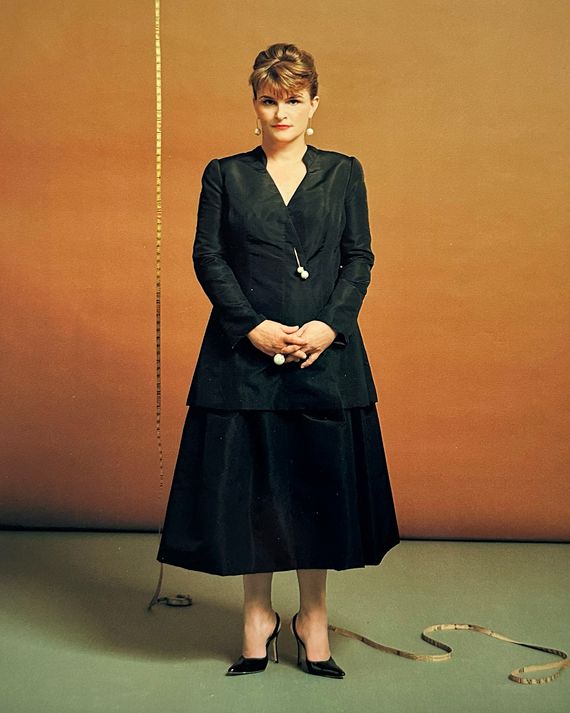
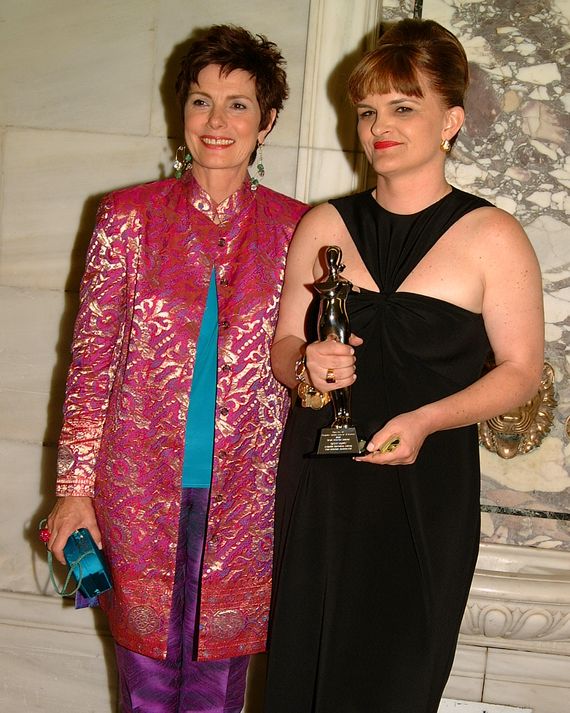
From left: 2000: I wanted to know what it was like to order an haute couture Chanel suit, and I wrote about the experience for the Times. A reader commented that I had picked the wrong style for my shape. Everybody’s a critic, but he wasn’t wrong. Photo: Cleo Sullivan2002: With Maureen Orth at the CFDA Awards, where I wore Bill Blass. “For God’s sake, don’t look like no one ever gave you an award before,” Bill told me. Judging from the Barbie updo and makeup, I didn’t fully listen. Photo: teve Eichner/WWD/Penske Media via Getty Images
From left: 2000: I wanted to know what it was like to order an haute couture Chanel suit, and I wrote about the experience for the Times. A reader com…
From left: 2000: I wanted to know what it was like to order an haute couture Chanel suit, and I wrote about the experience for the Times. A reader commented that I had picked the wrong style for my shape. Everybody’s a critic, but he wasn’t wrong. Photo: Cleo Sullivan2002: With Maureen Orth at the CFDA Awards, where I wore Bill Blass. “For God’s sake, don’t look like no one ever gave you an award before,” Bill told me. Judging from the Barbie updo and makeup, I didn’t fully listen. Photo: teve Eichner/WWD/Penske Media via Getty Images
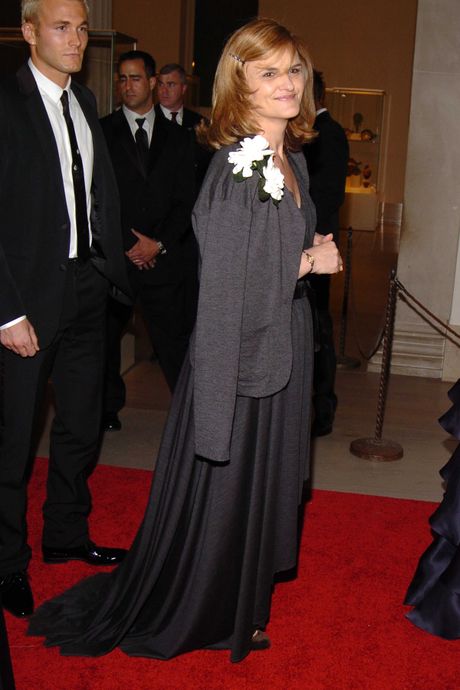
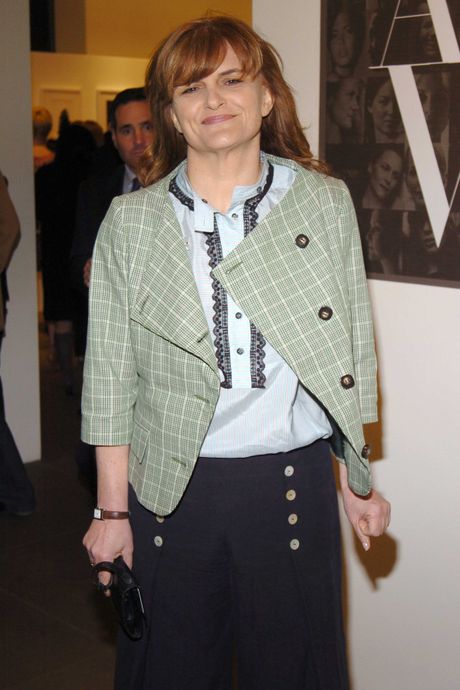
From left: 2005: Wearing a Lanvin dress after I had lost 30 pounds. People speculated that I was in love or moving to Paris. The boring truth is I needed to lower my cholesterol or go on Lipitor. Photo: Billy Farrells/Patrick McMullan via Getty Image2005: The Loulou de la Falaise sailor pants and blouse with a green jacket from Walmart. Photo: Billy Farrells/Patrick McMullan via Getty Image
From left: 2005: Wearing a Lanvin dress after I had lost 30 pounds. People speculated that I was in love or moving to Paris. The boring truth is I nee…
From left: 2005: Wearing a Lanvin dress after I had lost 30 pounds. People speculated that I was in love or moving to Paris. The boring truth is I needed to lower my cholesterol or go on Lipitor. Photo: Billy Farrells/Patrick McMullan via Getty Image2005: The Loulou de la Falaise sailor pants and blouse with a green jacket from Walmart. Photo: Billy Farrells/Patrick McMullan via Getty Image
If you really want to get excited about something, you need an image in your head. That’s obviously true of sex, but it’s profoundly true of aesthetics. Anything involving aesthetics — a work of art, the look of a room — needs an image to sharpen your eye and move you forward. And despite the new suit and the rediscovered clothes in my wardrobe, I didn’t yet have a solid sense of how I wanted to look beyond being polished.
Then in December, I flew to Los Angeles to spend a week with my son, who lives in Silver Lake. I usually stay at the local Comfort Inn. One day in my room, between our dinners and shopping trips, I started watching a BBC serial from the mid-’70s called The Duchess of Duke Street on Prime. Set in Edwardian London, it’s about a beautiful young working-class cook named Louisa (a dazzling Gemma Jones) who ends up running a fashionable hotel with a raffish English lord named Charlie (the late Christopher Cazenove). Despite the class barrier, they become friends and lovers.
I couldn’t stop watching. I’ve seen a ton of Edwardian period dramas, including many filmed before global streaming when producers weren’t obliged to adapt language and references for the audience, but the authenticity of Duchess is on another level. And what really captured me were Charlie’s suits. From sober town suits, to dinner clothes with the white contrast of the waistcoat, to country tweeds, each looked as perfect as the next. The Edwardian age is recognized as a great one for gentlemen’s tailoring, certainly the sexiest. By that point, five generations of English tailors had been perfecting the dark suit, and though some of the most famous women’s designers would later adopt it, the simplicity of the male suit, as the art historian Anne Hollander pointed out, has remained “a constant challenge for the best creative talent.” In other words, it resists attempts by fashion to improve it.
Looking at the incredible details of Charlie’s suits — the superb fit, the nonchalant sense of elegance with nothing extra — I finally got the image that illuminated everything. I realized I wanted less fashion: no oversize shoulders or novel fabrics. And I wanted to use everything I’d learned from all the years of writing about clothes, and from the memories of my mother’s taste and my friendships with people like André and Bill Blass, and turn them into a style that has meaning only to me. Because at 67, there is nowhere else for me to go but in reverse, to memory and tradition.
I decided to seek out a bespoke English tailor. I emailed my friend Nick Sullivan, the creative director of Esquire, for recommendations. Nick came back with a list of tailors in London and New York. One of them was Ralph Fitzgerald, a 30-year-old Englishman who had been chief cutter in the New York office of Huntsman, the Savile Row firm, before opening his own shop last year in the Chrysler Building. I later learned he had been making suits since he was a 16-year-old apprentice.
While still in Silver Lake, I noticed a scene in Duchess where Charlie strolls into the hotel with a slim, tightly furled umbrella hoisted on his shoulder. I jumped on the site of James Smith & Sons, the London umbrella-maker. There it was: the Shaftesbury Slim with the whangee crook handle.
I immediately had the feeling that the Slim ($290) would be a more distinctive accessory than a handbag, which I pretty much never carry. I ordered it over the phone and told the clerk I’d pick it up in mid-February, when I would be in London for the shows. Two months later, on a Saturday, I walked into James Smith in Holborn. The umbrella was waiting behind the counter. The young clerk, handing it over, said, “Would you like me to show you how to furl it, madam?”
That might have been the best part of my day.
I took a full-size suitcase to Europe that season, bringing everything I had for the previous collections, plus a masculine wool coat from Phoebe Philo, an old Jil Sander skirt I could get back into, and a well-cut pair of black cargo pants from H&M. For the first time since I’d bought the farm, I got my nails done — and took the trouble to wear gloves when I was working in the dirt. Normally, on the road, I write early in the morning, before the first show. But I found that pausing, taking the extra time to put myself together, to consider my hair and outfit, was worth it.
One night in Milan, I had dinner at the home of the designer Marco Zanini. Halfway through the meal, Marco, who has worked in fashion for three decades, revealed that he had gone to a tailor in Turin to have a suit made, his first bespoke. It was a pleasant coincidence. He said he wasn’t so passionate about the industry anymore — about his job, yes, but not so much the industry — and he realized that working on himself for once was itself a creative project. “There’s something rebellious about tradition,” Marco said. “A bespoke suit is a whole process — it’s all about the culture of the craft. And when you wear it, you know it. Most people would not notice the difference, but maybe the two people I care about will notice. And that’s what counts when you’re 50.”
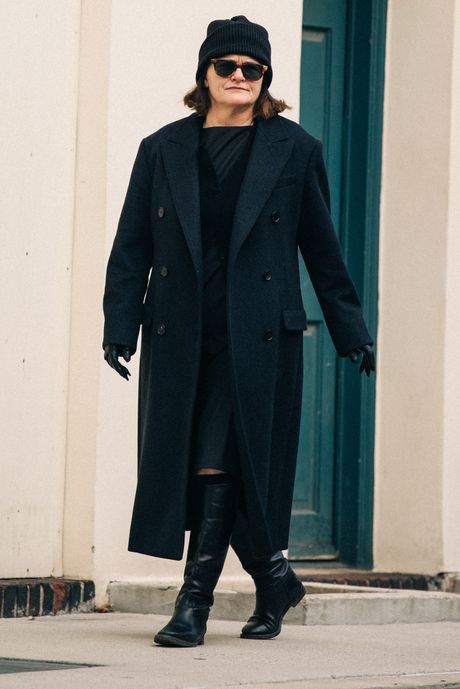
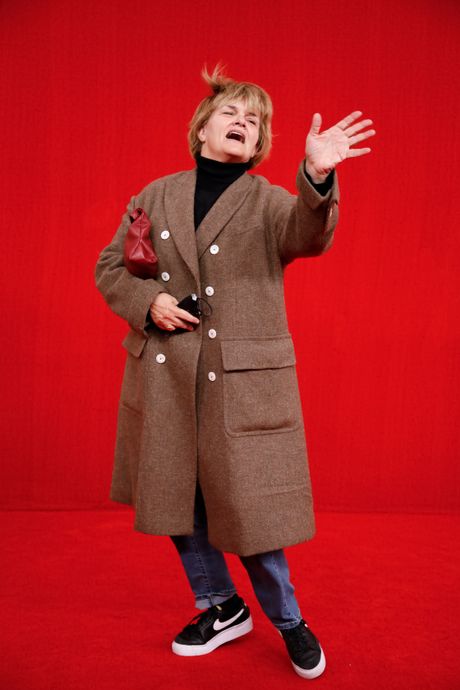
From left: 2020: Working classics: a Dior coat, which I still love, with a Zoran shift from the 1990s, a cardigan, and old riding boots. Photo: Adam Katz Sinding/2020 Adam Katz Sinding2021: Wearing the brown overcoat at a Balenciaga show. I was mugging for photographers on my way in, not realizing my image was being beamed onto a giant screen. Photo: Valerio Mezzanotti/Valerio Mezzanotti
From left: 2020: Working classics: a Dior coat, which I still love, with a Zoran shift from the 1990s, a cardigan, and old riding boots. Photo: Adam K…
From left: 2020: Working classics: a Dior coat, which I still love, with a Zoran shift from the 1990s, a cardigan, and old riding boots. Photo: Adam Katz Sinding/2020 Adam Katz Sinding2021: Wearing the brown overcoat at a Balenciaga show. I was mugging for photographers on my way in, not realizing my image was being beamed onto a giant screen. Photo: Valerio Mezzanotti/Valerio Mezzanotti
In April of this year, I went to see Ralph Fitzgerald. We discussed the look I wanted. I didn’t mention Charlie (coals to Newcastle!) but said, “Tall and sharp,” which was still pretty naïve. We met again in May for the primary fitting, when the jacket and pants are just basted and without shoulder pads, inner canvas, or a silk lining. We went through about 20 points.
Ralph would ask, “Where do you want to go with the shoulders? Do we want them wider?”
I’d pipe, “Sharper.”
“Okay. The width of them? I’m thinking of coming out a quarter of an inch.” Then the armhole: “And I think the run of this is a bit straight — I’d like to curve this out a quarter.”
“Fine.”
“The length of the jacket — I think the back is good. Would you like to go slightly longer in the front?
“Yes.”
“Let’s get at least an inch.”
On July 1, my suit, which was sewn in London and finished in New York and cost $6,000, was ready. It is gorgeous, and the fit flawless. But that’s not why it’s worth every cent. The big revelation to me was how comfortable it is. I feel like I could go for a jog in it. The jacket is so light and soft I have the childish urge to ball it up and throw it into the air. That’s not something you can do with most luxury ready-to-wear because the garment — for “hanger appeal,” for the look of fashion — is made with extra padding and the interfacing is glued to the fabric, making the jacket very rigid and heavy.
So in a sense, I’ve been liberated from fashion. In my suit, I can go back to traveling light and look elegant anywhere in the world. That reaction strikes me as mundane, though. The truth is I will always be a sucker for fashion. But in the suit, despite or because of all its history, I have the feeling of being unanchored to my age. That is, finally, the difference. The weightlessness.

